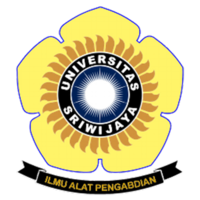Penggunaan Biosan (Biochar dan Kitosan) terhadap Pertumbuhan Tanaman Kangkung (Ipomoea reptans) dan Pengendalian Cu
Abstract
Griselda, M., Hamzah, A., Fikrinda, W., Priyadarshini, R., & Lestari, S.U. (2024). The use of biosan (Biochar and Chitosan) on the growth of kale plants (Ipomoea reptans). In: Herlinda S et al. (Eds.), Prosiding Seminar Nasional Lahan Suboptimal ke-12 Tahun 2024, Palembang 21 Oktober 2024. (pp. 374–382). Palembang: Penerbit & Percetakan Universitas Sriwijaya (UNSRI).
Soil productivity for crops is currently decreasing, including kale, so alternative materials in the form of biosans are needed for improvement. This experiment aimed to determine the best dose of biosan (biochar and chitosan) on the growth of water spinach. This experiment used a complete randomised design (CRD). With 5 treatments and 3 replications. Treatments consisted of no biosan (B0); biosan 5 tons/ha (B1); biosan 10 tons/ha (B2); biosan 15 tons/ha (B3); biosan 20 tons/ha (B4). The parameters observed included vegetative, while the heavy metal measured was Cu. Data analysis used anova at the 5% level, and BNT test. The results showed that the treatment dose of biosan 20 tonnes/ha was the ideal dose for the growth of kale plants aged 6 weeks after planting. The average results obtained include plant height (39.12) cm, number of leaves (14.00) strands, leaf area (362.62) cm2, plant wet weight (83.72) g, plant dry weight (5.42) g and production yield of 27.91 tonnes/ha. The results of Cu heavy metal analysis showed a significant decrease in Cu. Biosan, besides being used as a soil improver, can also be used to control heavy metal Cu.
Keywords
Full Text:
PDFArticle Metrics
Abstract view : 181 timesPDF - 222 times
Refbacks
- There are currently no refbacks.

